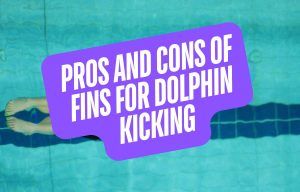So you made the plunge, and threw down some sweet cashola on a fitness tracker than you can use in the pool. Cool beans. But where to start? What to track? What to measure?
Here are some different things you can do with that fancy new waterproof fitness tracker to help you become a faster swimmer, err, faster:
Overall distance.
One of the measures most competitive swimmers use to judge their training is weekly volume. While this can be a handy metric for judging overall training work, it doesn’t necessarily account for variances in intensity and speed.
For instance, doing 25% of your regular volume, at 50% more intensity would yield a very different training adaptation than doing 100% of your training at low to moderate intensity.
Regardless, knowing weekly training volume helps you to better plan future training cycles and training. One of the first and defining features of smartwatches for swimmers, whether you are training in the pool or open water, is spitting out total volume or distance covered.
Stroke count average.
One of the secrets to swimming faster is in being more efficient. It’s why the fastest swimmers in the world make it look easy—over thousands of hours of training they have been able to manipulate their technique in order to swim across the pool at a dizzying speed with minimal effort.
One of the ways to become more efficient is with the awareness of how many strokes you are taking per lap.
Fortunately, a waterproof fitness tracker can automate this never-ending series of counts by measuring it for you, and producing an average stroke count as well.
Strive to steadily decrease your average stroke count over time in order to maximize the benefits that come with greater efficiency and mastery of the water.
(Note: a sudden increase in stroke count average can be a handy sign that you aren’t recovering enough between your swims/sets. The first thing to go when swimmers are fatigued is distance per stroke, with their stroke count increasing accordingly.)
Use it as an interval timer.
Remember the Beep test that you had to do in school? The one where everyone would line up in the gym, wait for the beep, run across the gym, wait for another beep, the time between beeps steadily decreasing until you were a lactate flushed mess on the floor of the gym? Yeah. That one.
While the memory of that was scarring for just about all of us who had to do it, you can set up your own little beep test with most waterproof fitness trackers. Pick an interval of, say, :45 seconds, and do as many 50’s as you can at that interval.
A couple weeks later, try to best that number. And so on. It’s an old school and simple way to measure and encourage improvement in the water.
Use it for Fartlek training.
Beyond being incredibly fun (in a childish sense, I assure you) to say, Fartlek training is super good for you and your training.
The concept is simple, you intersperse long, easy swimming with short and random bursts of speed (usually at a ratio of around 1:5 or so).
The goal isn’t to destroy you, but rather to keep your fast twitch muscles alive and growing while you grow that big aerobic base of yours. Set it to go off every 90 seconds, push off, and do 15 fast strokes every time you hear that beep.
The best part will be the speed play at random parts of the pool, meaning you will be working something different (streamline, flip turns, finish, mid-length explosiveness) each time around.
Better plan your training.
There are a ton of benefits that come along with measuring and tracking your workouts. The handy thing with fitness trackers is that it removes the whole “having to remember stuff” aspect of logging your workouts.
For the most part these devices come paired with software and apps that allow you to easily visualize your training over time.
This is important for a few reasons: it helps you see how hard you are actually training, gives you the opportunity to see where you need more rest, and can better inform your planning and training moving forward. Giddyup!
Use it to count your laps.
One of the most infuriating parts of going through a workout is losing count. Whether the rep is 400m or 2000m long, suddenly realizing that you have no idea whether the last turn you made was 300m or the next one is 300m is a frustrating occurrence that happens to us all (some more than others). Strap a simple swim lap counter to your finger to help you make sure that you are on pace to doing the mileage you want to do.
More Stuff Like This:
The Best Waterproof Fitbits for Swimmers. Fitbit—one of the most popular wearables on the planet—have two waterproof fitness trackers for swimmers. Here are reviews of both of Fitbits waterproof trackers for swimming.
Best Watches for Triathletes. Simple in function and powerful in use, these watches for triathletes and multi-sport athletes will take your training and competition to the next level.













